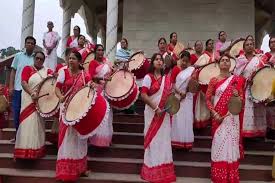Matua Community:

A social outfit recently organised a march with members of the Matua community in Habra of North 24-Parganas to protest against the proposed Special Intensive Revision (SIR) of electoral rolls in Bengal.
- The Matua community, a marginalized Hindu sect with roots in the 19th century, holds a significant socio- religious presence in the Bengal region, particularly across Bangladesh and West Bengal.
- Founded by Harichand Thakur in the 1860s, the Matua movement arose as a response to the deep-seated caste discrimination present within Hindu society at the time.
- As followers of the Matua faith, the community primarily belongs to the “Namashudra” caste, traditionally regarded as a lower-caste group within Hinduism.
- Harichand Thakur’s teachings centered on principles of social equality, human dignity, and the empowerment of marginalized groups through education and religious reform, making the Matua movement a powerful counterforce to caste oppression.
- Following the partition of Bengal in 1947, the Matua community experienced profound socio-political shifts.
- Many Matua families migrated to India to escape religious and political persecution, although a large portion of the community remained in what later became Bangladesh.
- Today, Matuas constitute the second largest SC population of West Bengal.




